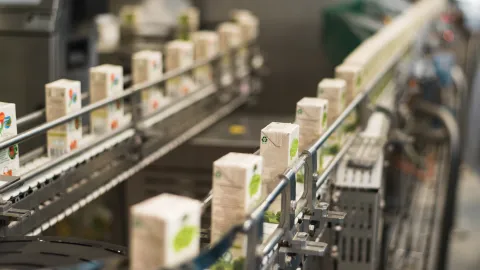
Data from packages
In the coming years, more and more information about packaging, its materials and use will be collected and shared. Legislation requires more detailed reporting than before. In addition to the authorities, consumers want more comprehensive information about packaging and how to sort it. So more data on packaging is needed.
GS1's standards and services help collect and share packaging information
Standards make data efficiently sharable
Products and packaging can be individualized and identified using GS1 standards. They make the data structured in a consistent manner, so that it can be collected and shared between different actors efficiently. In addition, the contents of the data are mutually comparable and can be compiled, thanks to which the information collected from the supply chain can be utilized and further enriched.
In addition to the GTIN product identifier, GS1 standards provide models for the identification and identification of reusable packaging. For example, the GRAI identifier (Global Returnable Asset Identifier) can be used to identify circulating load carriers by type and, if necessary, also individually.
GS1 2D code redirects to additional information and instructions
The GS1 2D code can be used to provide consumers and supply chain partners with information on packaging materials and recycling, for example. The code on the product packaging can be scanned with a smartphone, just like a standard QR code. It also works on cash registers, like a traditional EAN barcode. Thanks to the GS1 Digital Link standard, the GS1 2D code scanner can be directed to different online content, for example by role, location or language.
GS1 Synkka product information service enables accurate reporting
With the help of the GS1 Synkka product information service, it is possible to report the packaging information at the level of accuracy required by legislation. The data structure in GS1 Synkka enables the collection of product-level packaging material data and efficient distribution to entities that need the information, if necessary, also internationally. The information can be used in consumer communication and in the preparation of official reports.
Currently, companies with Extended Producer Responsibility report information about the packaging they use annually. In particular, the EU's SUP Directive (Single Use Plastic) and PPWR Directive (Packaging and Packaging Waste Regulation) bring a lot of new reporting when they enter into force. It is already known that in the future all detachable parts of the packaging must be reported accurately and separately. The proportion of recycled packaging material should probably also be reported. The directives are still being prepared, so some of the information needs will be confirmed later.
